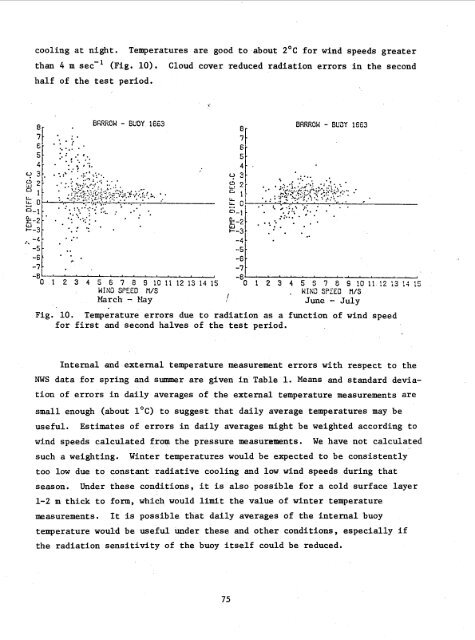AIDJEX Bulletin #40 - Polar Science Center - University of Washington
AIDJEX Bulletin #40 - Polar Science Center - University of Washington
AIDJEX Bulletin #40 - Polar Science Center - University of Washington
Create successful ePaper yourself
Turn your PDF publications into a flip-book with our unique Google optimized e-Paper software.
cooling at night. Temperatures are good to about 2OC for wind speeds greater<br />
than 4 m sec-' (Fig. 10). Cloud cover reduced radiation errors in the second<br />
half <strong>of</strong> the test period.<br />
Internal and external temperature measurement errors with respect to the<br />
NWS data for spring and summer are given in Table 1. Means and standard deviation<br />
<strong>of</strong> errors in daily averages <strong>of</strong> the external temperature measurements are<br />
small enough (about l0C) to suggest that daily average temperatures may be<br />
useful. Estimates <strong>of</strong> errors in daily averages might be weighted according to<br />
wind speeds calculated from the pressure measurements. We have not calculated<br />
such a weighting. Winter temperatures would be expected to be consistently<br />
too low due to constant radiative cooling and low wind speeds during that<br />
season. Under these conditions, it is also possible for a cold surface layer<br />
1-2 m thick to form, which would limit the value <strong>of</strong> winter temperature<br />
measurements. It is possible that daily averages <strong>of</strong> the internal buoy<br />
temperature would be useful under these and other conditions, especially if<br />
the radiation sensitivity <strong>of</strong> the buoy itself could be reduced.<br />
75








